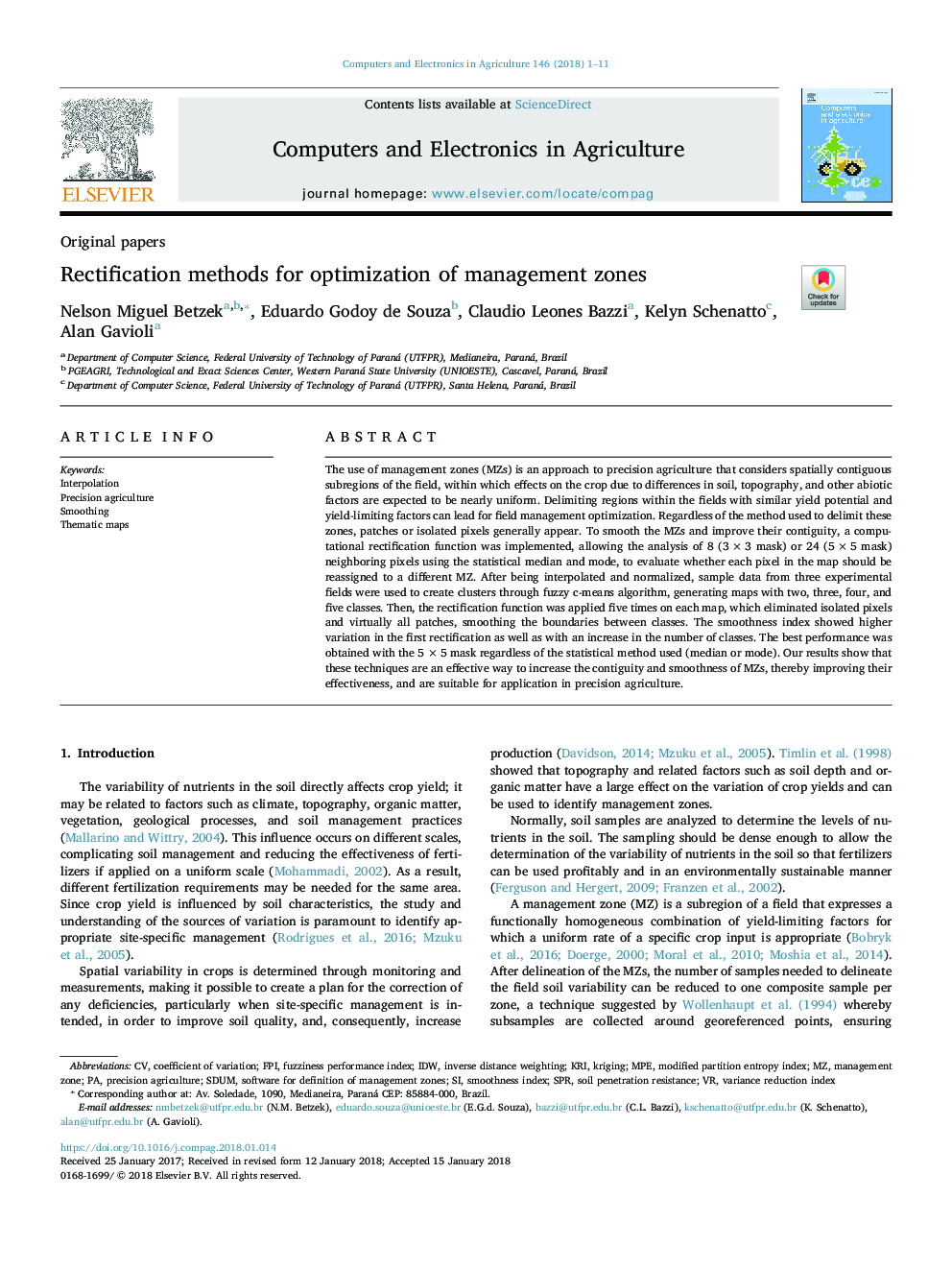| Article ID | Journal | Published Year | Pages | File Type |
|---|---|---|---|---|
| 6539650 | Computers and Electronics in Agriculture | 2018 | 11 Pages |
Abstract
The use of management zones (MZs) is an approach to precision agriculture that considers spatially contiguous subregions of the field, within which effects on the crop due to differences in soil, topography, and other abiotic factors are expected to be nearly uniform. Delimiting regions within the fields with similar yield potential and yield-limiting factors can lead for field management optimization. Regardless of the method used to delimit these zones, patches or isolated pixels generally appear. To smooth the MZs and improve their contiguity, a computational rectification function was implemented, allowing the analysis of 8 (3â¯Ãâ¯3 mask) or 24 (5â¯Ãâ¯5 mask) neighboring pixels using the statistical median and mode, to evaluate whether each pixel in the map should be reassigned to a different MZ. After being interpolated and normalized, sample data from three experimental fields were used to create clusters through fuzzy c-means algorithm, generating maps with two, three, four, and five classes. Then, the rectification function was applied five times on each map, which eliminated isolated pixels and virtually all patches, smoothing the boundaries between classes. The smoothness index showed higher variation in the first rectification as well as with an increase in the number of classes. The best performance was obtained with the 5â¯Ãâ¯5 mask regardless of the statistical method used (median or mode). Our results show that these techniques are an effective way to increase the contiguity and smoothness of MZs, thereby improving their effectiveness, and are suitable for application in precision agriculture.
Keywords
Related Topics
Physical Sciences and Engineering
Computer Science
Computer Science Applications
Authors
Nelson Miguel Betzek, Eduardo Godoy de Souza, Claudio Leones Bazzi, Kelyn Schenatto, Alan Gavioli,
